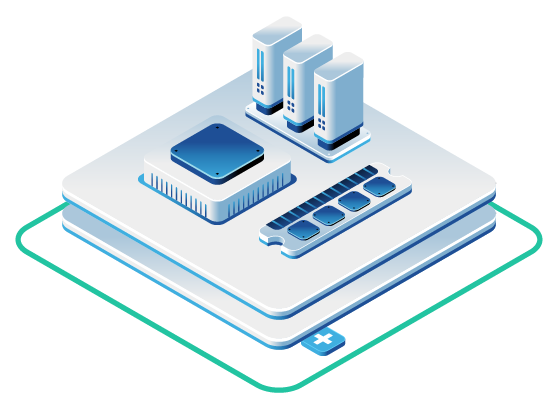
Modern media production generates massive volumes of audio and video content that need to be transcribed, subtitled, and archived. OpenAI’s Whisper – a state-of-the-art automatic speech recognition (ASR) model – offers human-level accuracy across many languages. Deploying Whisper on a private GPU cloud unlocks powerful new capabilities for media companies. This article explores strategic use cases for Whisper in media workflows, examines the limitations of public cloud transcription services, and highlights the benefits of hosting ASR on private GPU infrastructure. The goal is to inform CTOs and DevOps leaders in the media sector how this approach supports innovation, security, and operational efficiency in content production.
Strategic ASR Use Cases in Media Workflows
Media enterprises can use Whisper to automate and enhance audio/video processing at an unprecedented scale. Key use cases include:
Large-Scale Broadcast Transcription
Networks and studios can transcribe vast amounts of broadcast footage or recorded archives. For example, an integration of Whisper can ingest audio from incoming content or even an entire news archive, generating transcripts that serve as metadata. GDELT’s AI research shows the scale of need – tens of millions of minutes of global news have been transcribed in projects spanning 100+ channels and 50+ countries. Running Whisper in such scenarios creates text assets for every show, interview, or segment, enabling downstream analytics and repurposing of content.
Multilingual Subtitling for Global Distribution
Whisper’s multilingual training (one-third of its training data is non-English according to OpenAI) makes it adept at producing transcripts in many languages and even translating speech to English on the fly. Media companies can automatically generate subtitles in multiple languages to localize shows and videos for international audiences. In one broadcast tech platform, Whisper was used to “transcribe and translate content in real-time”, eliminating the need to send footage to external services for captioning. AI-driven subtitling dramatically speeds up the localization process, breaking language barriers so that a hit series or news report can reach viewers in any region with minimal delay.
Indexing Spoken Content for Search & Archiving
Transcripts turn unstructured audio into searchable text data. This is invaluable for media archives, compliance, and content re-use. By running Whisper on archived tapes or daily broadcasts, a media company can build an index of everything said on air. Newsroom platforms already use ASR to create rich metadata – e.g. transcribing ingested news clips so that journalists can instantly search within video archives using keywords. The Internet Archive’s public TV News archive demonstrates this value: it allows searching TV captions to find statements that aired on television but never appeared in print. With Whisper, media organizations can similarly index their own libraries, enabling producers to quickly retrieve past quotes, verify facts, or compile montages based on transcript queries. In short, hosting Whisper unlocks a cost-effective “research facility” over your entire audio/video repository.
These use cases illustrate how an in-house ASR engine can supercharge media workflows – accelerating production timelines, improving accessibility, and extracting new value from content archives. However, achieving this at scale also brings technical and operational challenges, especially if using public cloud services for transcription.
Challenges with Public Cloud Transcription Services
Relying on public cloud ASR APIs or shared cloud GPUs for large-scale media transcription can introduce significant cost, control, and performance challenges:
High Costs at Scale
Usage-based pricing on public clouds often “spirals out of control as AI workloads grow”. Transcribing thousands of hours via a cloud API (at rates like $0.006 per minute) can quickly lead to sticker shock. In practice, teams have seen AI cloud bills exceed expectations by 20× when moving from pilot to production. One industry CIO noted that attempting full-scale AI deployments in the public cloud “becomes unsustainable from a cost perspective” as usage increases. Media companies dealing with 24/7 content (e.g. dozens of live channels or a massive archive) face potentially huge monthly fees for cloud GPU instances or API calls. Unpredictable costs make it hard to budget for long-term transcription projects.
Data Control and IP Risks
Using a third-party cloud service means sensitive media files (e.g. unreleased film audio or confidential news interviews) must leave your environment. This poses intellectual property and security risks. By contrast, hosting Whisper in-house on a private cloud completely under your control ensures “data never leaves your servers”, which is critical for protecting confidential content. Media companies are rightly cautious about sending pre-release material to external APIs – not only due to potential leaks, but also compliance and ownership concerns. Some cloud vendors use customer data to improve their models, an unacceptable prospect for proprietary media assets. In short, public cloud ASR offers convenience at the expense of full data sovereignty.
Latency and Throttling in Shared Environments
Multi-tenant cloud services can’t guarantee real-time performance for mission-critical media workflows. In traditional setups, files must be uploaded and processed by an external service with no clear indication of when results will return. This uncertainty is problematic for newsroom use (where timing matters) and adds complexity (e.g. needing to poll or wait for transcripts). Moreover, shared cloud GPUs often suffer from “noisy neighbor” effects, where your job is slowed or throttled by other tenants on the same hardware. Cloud providers may time-slice GPU usage among customers, introducing unpredictable latency. For media operations – say generating live captions during a broadcast or processing large batches on deadline – these lags and throughput caps can disrupt production. There’s also the issue of API rate limits or quotas in public services, which can throttle high-volume transcription workloads. Overall, multi-tenant clouds can’t always meet the speed and consistency requirements of large-scale, real-time media transcription.
Given these challenges, it’s clear why many media tech teams are exploring alternatives that offer cost stability, data control, and guaranteed performance. This is where a private GPU cloud solution becomes compelling.
Benefits of Hosting Whisper on a Private GPU Cloud
Deploying Whisper on a dedicated private cloud (for example, OpenMetal’s hosted private cloud with GPU nodes) allows media companies to sidestep the above issues. By owning or leasing single-tenant GPU infrastructure, you gain:
Bare-Metal Performance with No “Noisy Neighbors”
In a private cloud, the entire GPU server is yours – there’s no virtualization overhead or contention with other users. You get full root access to the hardware, ensuring maximum throughput for Whisper and consistent latency. OpenMetal’s GPU clusters, for instance, use fully dedicated NVIDIA A100/H100 GPUs, so resources are “never throttled, shared, or exposed to noisy neighbors”. For media workflows, this means transcription jobs run at predictable speeds and live subtitling can keep up with broadcasts. Dedicated bare-metal GPUs deliver guaranteed performance without the unpredictability of cloud instance scheduling. In short, private infrastructure lets you utilize Whisper’s capabilities to the fullest, with enterprise-grade performance and no surprises.
Complete Data Sovereignty and Security
A private GPU cloud keeps your content 100% under your control. All media files and transcripts reside within your secured environment, addressing any data residency or IP protection requirements. As one case study notes, in a single-tenant cloud “data never leaves the organization’s trusted boundary”. This level of data sovereignty is crucial for media companies dealing with sensitive or embargoed content. You can enforce your own security policies (encryption, access control, audit logging) and ensure compliance with any regulations or client demands. Unlike public clouds’ shared responsibility model, a private cloud means you know exactly where and how your data is stored and processed. This not only mitigates the risk of leaks, but also simplifies compliance audits – a key advantage if your media assets involve strict contractual or legal protections. With OpenMetal, you have full root access to your infrastructure and you can also lock out OpenMetal staff, so the data is completely private and secure.
Predictable, Scalable Cost Structure
Private cloud deployments typically use transparent fixed pricing (monthly or annual), avoiding the unpredictability of pay-as-you-go billing. For example, OpenMetal offers “pricing transparency: monthly billing with no hidden usage fees or out-of-control egress costs”. For high-volume transcription, this model can dramatically lower TCO. You lease the GPU servers at a known rate, and you’re free to utilize them fully without incurring extra charges for every hour of audio processed. As utilization increases, the unit cost of transcribing each minute drops, since you’re amortizing the hardware cost rather than paying cloud premiums. Additionally, data transfer within your private cloud is typically free, so moving large video files into the ASR system or distributing transcripts doesn’t rack up egress fees. The result is a budget-friendly solution – you can batch process your entire archive or run continuous transcription on dozens of streams with a clear, controlled expense line. Predictable costs make it easier to justify and expand ASR projects, turning what was once a variable operational cost into a fixed, optimizable asset.
Seamless Integration with Open-Source Tools (OpenStack, Kubernetes, Ceph)
Private GPU clouds can be built on open, interoperable platforms that mesh well with modern DevOps workflows. OpenMetal’s service, for instance, is powered by OpenStack for cloud orchestration and Ceph for storage. This means your Whisper deployment can leverage robust cloud-native tools: you might use Kubernetes on top of OpenStack to containerize the Whisper inference jobs and schedule them across multiple GPU nodes for load balancing. You can also take advantage of Ceph’s distributed storage to handle the huge volumes of media data – “easily scale storage capacity by adding more servers… eliminating the need for costly and disruptive upgrades” as your content library grows. In practice, a private cloud gives you a full-stack environment (compute, storage, networking) comparable to a public cloud, but entirely dedicated to you. This makes deploying Whisper at scale much more flexible and customizable. You can integrate with existing media asset management systems, connect to on-premise workflows via private networking, and tailor the environment to your needs (for example, attach high-performance NVMe storage for faster I/O on large video files, or adjust container configurations for optimal batch throughput). The support for open-source frameworks ensures that your ASR infrastructure isn’t a black box – it’s an extensible part of your media pipeline that your DevOps teams can manage and optimize using familiar tools.
No Compromises on Privacy or Compliance
Finally, a private GPU cloud addresses the governance concerns that media organizations often have with public services.
As an OpenMetal engineering lead put it, “Public cloud GPU access is riddled with limitations—premium pricing, throttled performance, and infrastructure you don’t control”.
By contrast, a private cloud entails no compromises on performance or privacy – you get the best of both worlds: cloud-like scalability and convenience, combined with on-premise levels of control and security. You can enforce strict user access controls (no external staff will handle your data), maintain content air-gaps for unreleased material, and ensure all processing happens in pre-approved geographic locations (important for international co-productions or legal constraints). For media companies working with partners, a private cloud can also provide multi-tenant isolation within your organization – for instance, segregating projects for different clients or shows on separate VLANs or Kubernetes namespaces, all under your central governance. In sum, hosting Whisper on private infrastructure lets you uphold corporate security policies and IP protections without sacrificing the efficiency gains of ASR.
Example: Streamlining a Newsroom with Private ASR
To illustrate the impact, consider a broadcasting company adopting Whisper on OpenMetal’s GPU cloud. Previously, the newsroom sent clips to a third-party transcription service and waited (sometimes hours) for results. Now, with an in-house Whisper cluster, audio from every incoming feed is transcribed in real-time as it arrives. Reporters can search a unified index of all transcripts to find sound bites instantly, and editors automatically receive subtitle files in multiple languages for each story. The cumbersome step of uploading content to an external API is gone – transcripts are ready by the time a video finishes ingest. This aligns with the experience of one media platform that noted “transcribing the original content as it comes in” locally not only improved indexing, but also produced subtitles on the fly and boosted productivity. Moreover, because the solution runs on a fixed-cost private cloud, management can transcribe far more content than before (including decades of archived footage) without worrying about per-minute fees. The media company gains a competitive edge: journalists mine the archives for context and connections, multilingual subtitles expand global reach, and the entire content pipeline moves faster with automation.
Conclusion: Enabling Innovation, Security, and Efficiency
Adopting a private GPU cloud for Whisper ASR empowers media companies to innovate in how they produce and monetize content. Automation at scale – from transcription to translation – becomes feasible as a core in-house capability, opening up new avenues (like personalized content recommendations based on transcript data, or improved accessibility for hearing-impaired audiences through timely captions). At the same time, the private-cloud approach safeguards the security and ownership of valuable media assets, ensuring that no sensitive audio ever leaves the company’s control. Operationally, teams benefit from predictable costs and high performance, which translates to greater efficiency: large batch tasks can be run overnight without breaking the budget, and real-time workflows can count on low-latency, reliable processing. In a competitive and fast-moving media landscape, hosting Whisper on private GPU infrastructure like OpenMetal’s gives organizations the confidence and agility to deploy AI at scale. It’s a strategic investment that unlocks AI-driven innovation (through rich speech analytics and global localization) while upholding the trust, security, and efficiency that modern media production demands.
GPU Servers & Clusters Catalog
Questions? Schedule a meeting or start a chat.
Note: We would like to make this article as comprehensive and accurate and possible. If you have any suggestions for improvements or additions please feel free to send them over to marketing@openmetal.io.


































